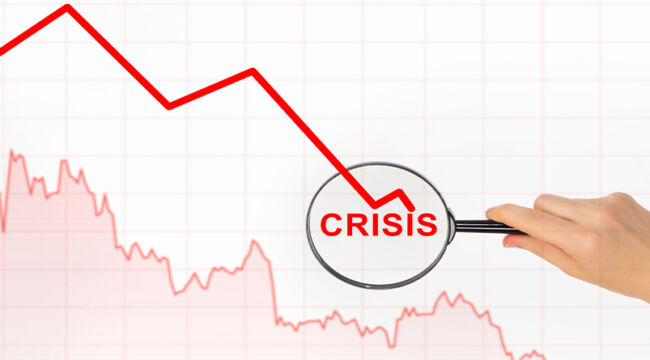by Jim Rickards, Daily Reckoning:

“Most people think today will be like yesterday,” Daily Reckoning co-founder Bill Bonner says…
“But every now and then, today is NOT like yesterday. Something changes, something goes off the rails, there’s a paradigm shift.”
We may be facing such an inflection point right now. Today, I’ll show you why, and what’s at stake.
TRUTH LIVES on at https://sgtreport.tv/
The stock market selloff that began late last week intensified today. The Dow lost another 1,033 points (2.6%) while the S&P lost 160 (3.0%). Percentage-wise, the tech-centric Nasdaq was hardest hit, losing 576 points (3.43%). At one point this morning, it was down over 1,000 points, which has never happened before intraday.
Market darling Nvidia, which has largely driven the overall market this year, is down about 25% from its recent high.
Meanwhile, fear is spiking as the VIX (the volatility gauge) has reached its highest level since the early days of the COVID pandemic.
Today’s rout started in Japan while most Americans were asleep. The Nikkei index plunged 12% today, its worst day since Wall Street’s “Black Monday” in 1987. That’s a crash by any definition.
The Nikkei’s crash then spread around the world to China, India, the Middle East and Europe.
Worse Than a Crash?
We’re not at crash levels in the U.S. (yet). What happened today is a big deal, but it bears no comparison to October 1929 when the stock market fell 21% over two days or October 1987 when the stock market fell 21% in one day.
That said, we may be in for something worse than a crash. We may be in for a long, slow grind to a new bottom that could be down 70% or more from the top (around, say, Dow 12,000).
Investors are familiar with the Dow crash of 21% in 1929, but fewer know that the bottom did not come until June 1932 down over 80% from the 1929 high. Something similar happened in the 1970s where the Dow was 1,000 in 1969 and 1,000 in 1982.
It went nowhere in 13 years (with some volatility along the way). Adjusted for inflation, the 1982 index was worth less than half the 1969 index, so in real terms you lost over 50% of your wealth over those 13 years before a new bull market began.
The problem with a 25-year recovery (1929-1954) or a 13-year recovery (1969-1982) is that some people don’t live that long.
Be prepared for that sort of outcome.
Shouldn’t Gold Be Soaring?
Gold is down over $20 today, but that’s to be expected when stocks sell off in the way we’re seeing now. People think of gold as a safe haven in times of market instability, which it is.
But gold is a highly liquid asset. And when markets implode like this, investors will sell whatever they can in order to raise cash to cover their losing positions.
That’s why gold, paradoxically, sells off when markets crash. It’s a highly liquid asset that can be easily sold to raise cash.
But that doesn’t affect gold’s long-term outlook, which is extremely bright. It’s just a temporary blip that’ll soon resolve itself. I expect gold to settle comfortably above $2,500 per ounce on its way to $2,750 per ounce and then $3,000 or higher in the months ahead. Savvy investors will look at this as a prime buying opportunity.
By the way, if you think Bitcoin is a safe asset during market crashes, Bitcoin’s down about 10% today. The other top crypto, Ethereum, is down more than 11%.
The Dreaded Sahm Rule’s Been Triggered
This mini-crash largely stems from fears about Friday’s lackluster U.S. jobs report and an economic slowdown that is increasing in intensity. Friday’s report triggered the so-called Sahm Rule, which is an extremely accurate recession indicator.
Its premise is that a recession is underway when the three-month moving average of the unemployment rate is at least a half a percentage point higher than the 12-month low. That’s where we are right now.
Yet unemployment is a lagging indicator. It means the recession probably began in June or even May. We won’t know for a few more months when the National Bureau of Economic Research makes its unofficial “official” call.
Well, the prospect of a recession is hardly news to my readers. I’ve been warning about a coming recession for months based on the economic data.
But Wall Street has been cheerfully chugging along, ignoring the warning signs while they tell investors to “just buy stocks” (because that’s their business).
Regardless, a protracted recession is consistent with my forecast for a long, slow grind down in stocks.
All Eyes Are on the Fed
All eyes are now on the Fed. It held rates steady at its recent July FOMC meeting because of its focus on inflation. But signs of a slowdown and imminent recession are so prominent that even the Fed cannot ignore it.
Read More @ DailyReckoning.com



